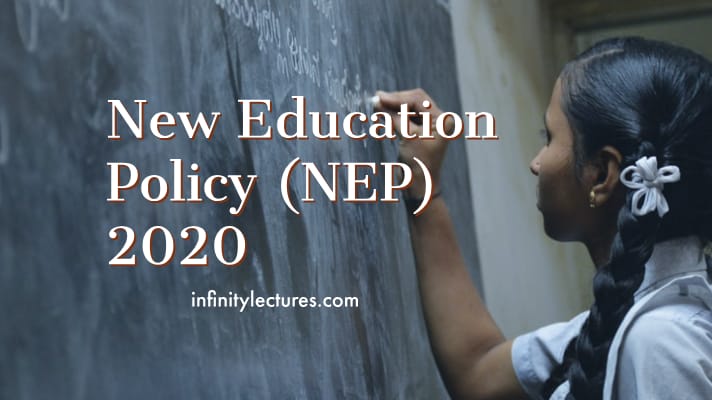New Education Policy (NEP) 2020 was launched on 29 July 2020. The government approved the New Education Policy (NEP) and also renamed MHRD (Ministry Of Human Resource and Development) as the Ministry of Education.
The National Education Policy was formed in 1986 and last updated in 1992. Since then, the same structure was being followed until this new policy came out. The country has witnessed many changes during these 3 decades like changed technologies, changed lifestyles, changed rules but it took 30 years to bring changes to education policy.
Related: What is wrong with the Indian Education System.
It is said that if you want to change a country, its education policy should be changed first. The change has been initiated. Now, let’s see the major highlights of the New Education Policy (NEP) 2020.
New Education Policy 2020- Major Highlights
#1. Till now, the education system in India was based on the 10+2 format, which means High school (10th) + Intermediate (11th-12th). But now it is changed to 5+3+3+4 format.
- The first 5 years of education will be considered “Foundational Stage” based on the curriculum developed by NCERT. This will include 3 years of pre-primary and 2 years of 1st and 2nd standard. Students will learn through sports and other activities during these 5 years.
- In the next 3 years, which means 3rd standard to 5th standard, students will study subjects like Science, Mathematics, Social Science, Humanities, and Arts to prepare them for their future.
- The next 3 years will be considered as “Middle Stage” i.e from 6th standard to 8th standard.
- The 9th to 12th standard will be the last stage of school education, which is of 4 years. In this stage, students can choose their own subjects so that they can develop deep knowledge in a particular topic.
#2. The Stream system is now put to an end. You don’t need to select out of Science, Commerce and Arts streams. Now students can choose any of the given subjects and continue their studies with their interesting subjects. But the detailed explanation for this system is yet to come.
#3. Secondly, students will now be taught in regional languages or Mother’s tongue until the 5th standard. Instead of focusing on English, they can study Marathi, Gujarati, Tamil, and other regional languages, even in private schools which give importance to the English language a lot. English will only be treated as a subject and not compulsory until the 5th standard.
#4. Students will be able to learn computer codings and technology from the 6th standard. This will help to develop their basic skills and knowledge in computer technology from an early age. Internship programs will also be available for students during school times to gain more practical knowledge rather than theoretical knowledge.
#5. Now, 9th-12th class exams will be conducted through the semester system, which means the academic year will be divided into two semesters of 6 months and exams will be conducted at the end of each semester.
#6. Your final assessment will be made by adding two semester’s marks. So now, you can’t say that you will prepare for your final exams.
#7. Board exams will now be easy and students will be assessed by their practical knowledge rather than rote learning. You are free to write in any language for your board exams.
#8. The final Report Cards will now be prepared on 360 Degree Assessment where students will be marked by themselves through self-assessment, by their teachers as well as their classmates also.
These were some changes made in the school-level education policy in India. Now let’s see what are some changes made for the Higher education system.
New Education Policy 2020 for Higher Education
#1. A concept of COMMON APTITUDE TEST is introduced for all students who want to take admission in colleges and universities. For those who couldn’t score cut off marks in 12th Boards, will be allowed to give CAT (common entrance test) on which basis, students can take admissions to their dream college or university.
#2. Graduation will be divided into 3 and 4 years duration. Earlier, if you drop your graduation before its completion, you could not get your graduation degree. But now,
- if you drop your graduation in the first year, you will get a certificate course.
- If you drop your graduation in the second year, you will get a diploma
- if you completed your 3 years of graduation and dropped, then you will be provided bachelor’s degree
- If you continue to 4th year, you will get a bachelor’s degree along with a research certificate.
#3. Like the school system, the student can also choose their own subjects during graduation. This system is called MULTI-ENTRY and MULTI-EXIT system. You can enter any time and exit any time during your graduation process.
#4. If you want to pursue more than one course at a time, then you can do it. In this system, for example, if you drop your 1st-year graduation for any course then your credits will be added to your academic bank, which is called ACADEMIC BANK OF CREDIT. Then if you want to join that course again, you can do that on these credits basis and you can continue your graduation anytime you want. All this process will be digital.
These changes are likely to be implemented in Education System by 2021-2022 academic year.
Apart from these changes, a new law will also be implemented, where schools and colleges cannot ask for any extra fees and money other than a fixed school and College fees.
All these changes will be implemented in both, rural and urban areas. Till now, we were probably following 20th century Education Policy which was not sufficient for 21st-century development. I hope these changes may be seen in government schools too.

